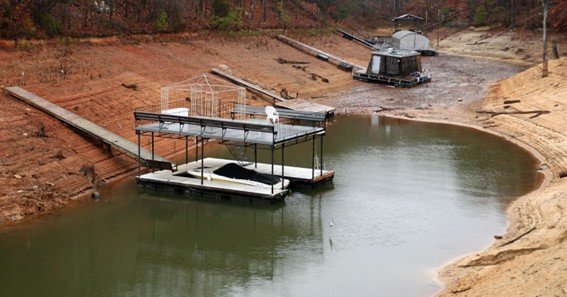Understanding Lake Lanier’s Water Volume
Lake Lanier, officially known as Lake Sidney Lanier, is a man-made reservoir situated in northern Georgia. Created in the 1950s by the construction of Buford Dam on the Chattahoochee River, the lake serves multiple purposes, including water supply, hydroelectric power generation, flood control, and recreation.
When at its full pool elevation of 1,071 feet above mean sea level (MSL), Lake Lanier holds approximately 624.7 billion gallons of water. This immense volume underscores the lake’s critical role in supporting the region’s water needs and ecological balance.
Key Facts About Lake Lanier
-
Surface Area: Approximately 38,000 acres.
-
Shoreline: Over 692 miles, offering extensive recreational opportunities.
-
Maximum Depth: Around 160 feet near the dam.
-
Water Supply: Provides drinking water to over 4 million residents in Georgia.
-
Economic Impact: Contributes approximately $5 billion annually to the local economy through recreation and tourism.
Factors Influencing Water Levels
Lake Lanier’s water levels are subject to fluctuations due to various factors:
-
Seasonal Changes: Rainfall and evaporation rates vary throughout the year, impacting water levels.
-
Water Withdrawals: Daily withdrawals for municipal and industrial use can affect the lake’s volume.
-
Drought Conditions: Extended periods of low rainfall can lead to significant drops in water levels.
-
Sedimentation: Erosion and sediment accumulation have reduced the lake’s storage capacity by approximately 13.678 billion gallons.
Management and Conservation Efforts
The U.S. Army Corps of Engineers manages Lake Lanier, implementing strategies to balance water supply, recreation, and environmental concerns. Efforts include regulating water releases, monitoring water quality, and collaborating with local agencies to promote conservation.
Frequently Asked Questions
Q1: What is the primary purpose of Lake Lanier?
A: Lake Lanier was created for flood control, hydroelectric power generation, water supply, and recreation.
Q2: How does Lake Lanier’s water volume compare to other U.S. reservoirs?
A: With a capacity of approximately 624.7 billion gallons, Lake Lanier is among the larger reservoirs in the southeastern United States.
Q3: Has sedimentation significantly impacted the lake’s capacity?
A: Yes, sedimentation has reduced the storage capacity by about 13.678 billion gallons, highlighting the need for ongoing conservation efforts.
Q4: Who relies on Lake Lanier for water supply?
A: Over 4 million Georgians, including residents of cities like Atlanta, depend on Lake Lanier for their drinking water.
Q5: What recreational activities are popular at Lake Lanier?
A: The lake offers boating, fishing, swimming, camping, and more, attracting millions of visitors annually.
In summary, understanding how many gallons of water are in Lake Lanier provides insight into its significance as a vital resource for Georgia. Its vast capacity supports not only the region’s water needs but also its economy and recreational activities.










